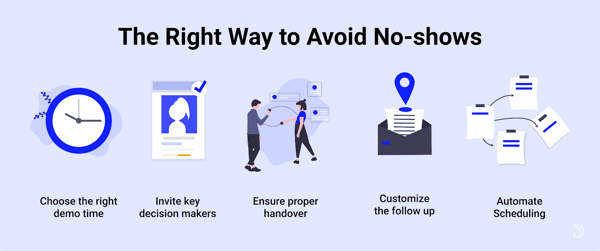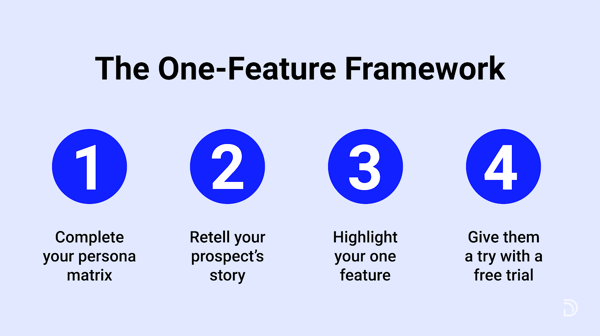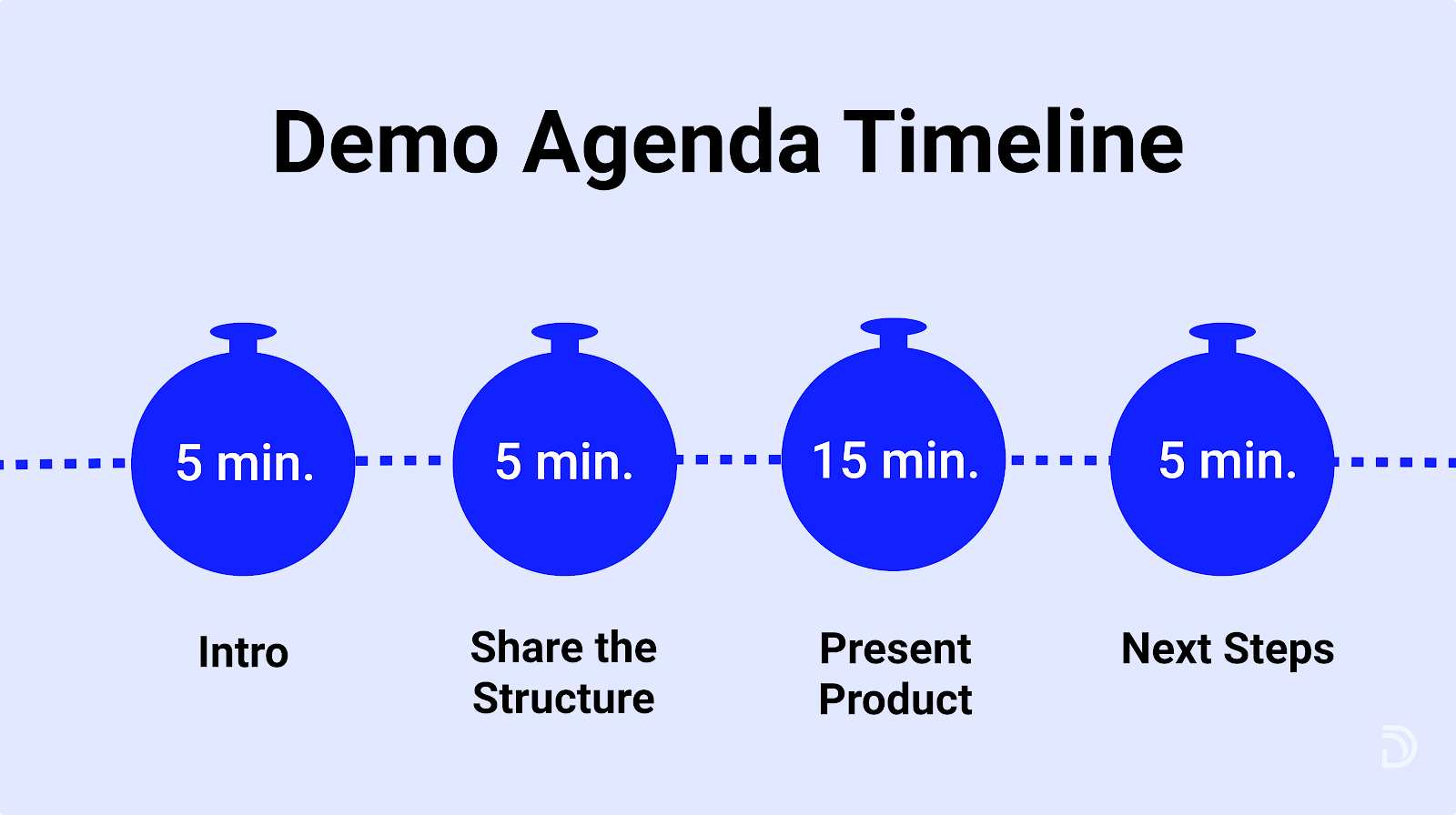
Demonstrating your product to a captive audience is a defining moment in the sales process.
As the most important step to closing the deal, you obviously want to get your demo right. If you want to close more deals and open even more doors, you need to study, practice, and perfect each stage of the demo process from preparation to presentation to the follow-up. To help you get there, we’ve composed this comprehensive overview to deliver a winning product demo.
A sales demo involves presenting your product and highlighting the value it brings as well as the pain points it will solve for the prospect. In inside sales, demos are typically delivered using online meeting tools with chat, face-to-face video, and screen sharing capabilities. And of course, the main goal is to demonstrate the value of your product and close the deal.
Some salespeople jump right into presenting various features their product has while others completely skip the qualification step. You want to make sure you are not just focusing on the demo itself but how you approach your prospect before and after the demo.
There’s a lot of work that goes into delivering a winning demo. However, there are five key things you need to do before you can even present your product. Let’s go through the steps you’ll need to prepare for the demo.
One-size-fits-all sales demos don’t work, which is why the discovery call is so important. This is your chance to study your prospective client and identify their biggest pain points.
The goals of discovery are to qualify for the demo, identify your prospect’s challenges and pain points, build rapport, identify key decision-makers, and to sell the demo. Yes, that’s a lot, but a discovery call will give you the information you need to tailor the demo to your prospect’s story.
For the discovery call to go well:
You should never let scheduling hiccups get in the way of your sale. Make the scheduling process as seamless as possible as not to create any barriers for your prospect.

Follow these guidelines when scheduling your demo to build up the momentum for the sale:
Your demo agenda should be a strategic plan for the flow of the demo, designed specifically for the prospect and their business. It tells everyone why they are attending the demo, what they will get out of it, and the amount of time it will take to complete.
After you’ve established the timeline, you’ll talk with them for about 30 minutes. Respectfully stay within that time frame. Creating a demo agenda is extremely helpful not only for yourself but will help set your prospect’s expectations early on. In this case, prepare to spend five minutes on an introduction, five minutes to set the stage, 15 minutes for solution mapping, and five minutes for the next steps.
A well-thought-out agenda should give you time to:
Products tend to have dozens of use cases and features that solve various needs. Over time we have learned that to sell effectively, it’s best to highlight one main feature that will solve the prospect’s main pain points. This laser-focused approach is called the One Feature Framework.
The One Feature Framework can be implemented in four steps:

In a recent survey, 70% of respondents reported that technical blips during their presentation led to a loss of credibility with their audience. Ensure you have the right set up, including:
By investing a couple of extra minutes to make sure your tech set-up is running smoothly, you can drastically decrease the number of issues and distractions you have during the demo.
If you’ve just scheduled a demo, you’ve got a golden opportunity to showcase your product and help your customer succeed. Here are the best practices that will help you deliver a smooth, insightful demo.
The beginning of the demo should be reserved for establishing a personal connection with your prospect. One advantage of a video conferencing tool is that you get to see each other face-to-face without wasting time trying to find a place to meet.
Instead of immediately getting down to brass tacks, take a minute or two to talk about something you have in common. This might be a shared connection, your alma mater, or something relevant you learned when researching them on social media or on the company website.
Getting your audience talking early and developing rapport, will make the rest of the demo flow more smoothly as you all get to know each other.
Pop quiz! What should you have emailed to your prospect 24 hours prior to the meeting? That’s right. A demo agenda.
Since there may be various people attending the meeting, including key decision-makers, it’s always a good idea to outline what has been discussed previously and reiterate the agenda. Informing prospects about the agenda at the beginning of the demo and asking if anything is missing, sets expectations, and keeps everyone on task.

Your demo agenda timeline should look something like this:
Keeping everyone engaged in your demo seems like a no-brainer, but you can’t rely on your charismatic personality alone. Too many demos focus on functional product features without considering the emotional aspects that influence the sale.
Try incorporating these engagement techniques into your demo to ensure prospects are connecting with you on both a business and an emotional level.
These engagement tactics work if you prepare in advance. Make them seamless to your demo and deliver them in an authentic way.
It feels good when your presentation goes well, but it doesn’t mean the pressure is off. When it’s time for questions, you need to prepare yourself for objections.
It’s important to remember that objections during an interactive product demo usually mean the prospects are considering your product and want to cover every possible scenario. It’s not a time to argue, but a time to enlighten. Here are 5 tips to conquer objections:

Everyone loves when a demo goes smoothly without any questions or objections, but the reality is that no objections can be a red flag. It might mean their interest is low. Instead of fearing objections, prepare for them and make them work in your favor.
Before wrapping things up on your demo, your last goal is to establish the next steps. Chris Orlob, Director of Sales at Gong.io, found that close rates can plummet by over 70% when you fail to discuss the next steps.
The succeeding stage of the demo process, defining the next steps, should not be an afterthought. In fact, you can start preparing for the next steps before the demo even starts. To get you going, use these following few tricks to define the ideal course of action for your prospect.
While the next steps are critical to let the prospect know what they need to do after the demo, you need to continue using this momentum by sending a well thought out follow-up email.
The demo ended and time is ticking. The most important action after the demo is to craft a follow-up email that keeps the momentum going. Your follow-up email should also cover the next steps that you agreed upon previously.
Don’t assume you can scrounge by and throw together something without much thought. This can actually hurt you in the grand scheme of things. The following five pointers will help you be more constructive when sending and writing a follow-up email.
To maximize the effectiveness of your email, we’ve identified a successful follow-up formula that you can use, along with the pointers, as a template for your own follow-up.

Here is an example of this template put into play:
Subject: Great Demo! Here is what comes next.
Hi Marcus,
I thought I would send you over a quick email to reestablish what the next steps will be moving forward. There were a few areas you wanted to focus on in the demo to see how we might be a fit. We focused on:
- Integration with all your existing tools: Includes all the tools you are currently using as well as the ones you are considering to include.
- Simple-to-use interface: The streamlined interface helps simplify activities for both internal teams and customers.
- Automation for customer-facing processes: You can customize the extent of the automation process so that your customers are always informed.
You mentioned that you would also like to show your colleague the interface. The next step would then be to schedule another quick video call. You can do that here.
I look forward to talking with you and your colleague soon!
Samantha
Remember that you’re in control of the sales process, and your prospect is expecting you to guide them through each step. That means over-communicating, understanding their situation, and working with them to provide value.
Each phase of the demo process that we walked you through, from demo preparation and the demo itself to the demo follow-up, is essential to pushing the sale forward in the most effective way. Did you forget to do a discovery call first? Well, you might be spending your valuable time on a lead that won’t even buy.
Implement these strategies in your sales process to present demos that convert! If you need an extra hand, check out these checklists that will help you through the whole progression of the sale. Happy sales!
Veronika is the CEO & Co-Founder of Demodesk, an online meeting tool for customer-facing teams. She has helped to revolutionize the online meeting landscape through Demodesk’s innovative technology.
Sales teams use a dozen tools to make sales pitches more personal — CRMs, proposal software,...
 by Rory Sadler
by Rory Sadler
Personalizing your B2B sales strategy connects you with your customers and drives better sales.
 by Manas Jha
by Manas Jha
What would you choose: working on a $1M deal for a year or having a million small or mid-size...
 by Lucy Literado
by Lucy Literado
Sales teams use a dozen tools to make sales pitches more personal — CRMs, proposal software,...
 by Rory Sadler
by Rory Sadler
Personalizing your B2B sales strategy connects you with your customers and drives better sales.
 by Manas Jha
by Manas Jha


